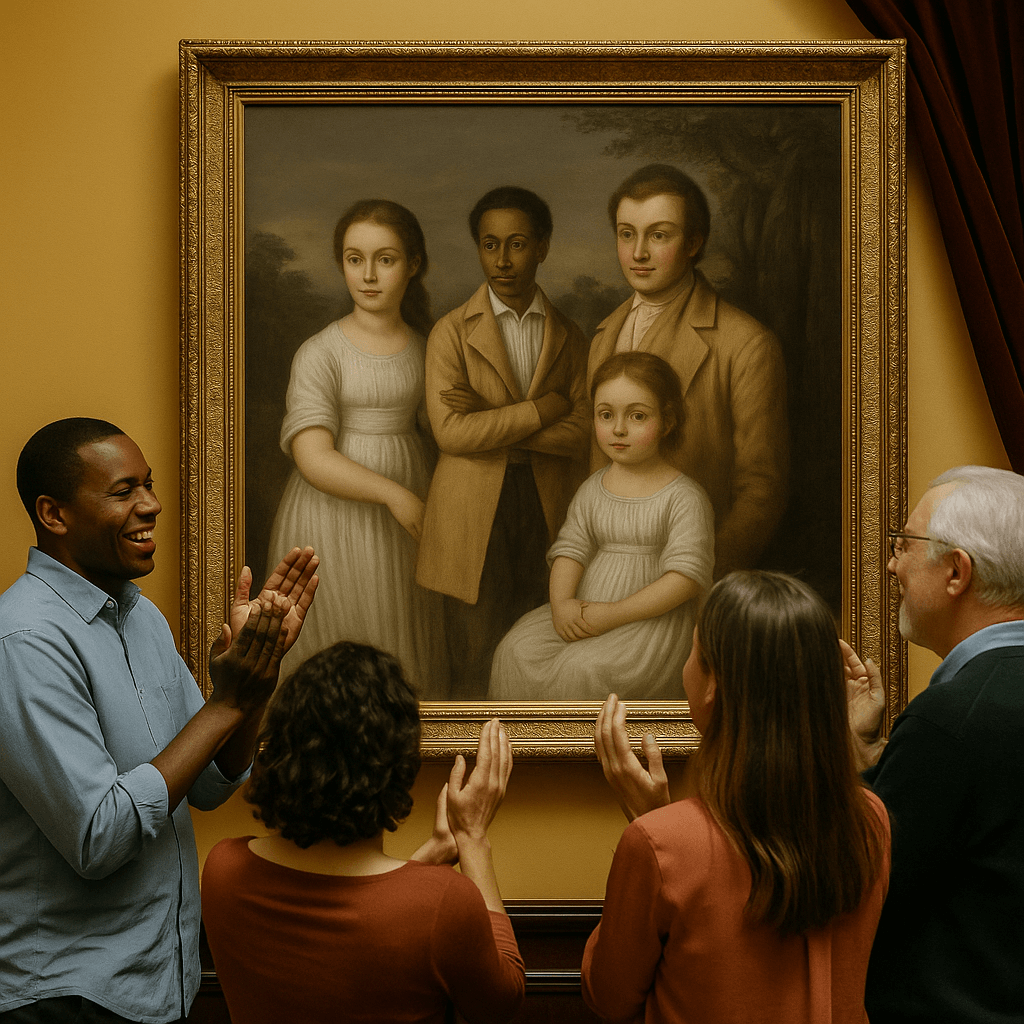Restoration, Part III: After the Reveal
AI-generated image of a diverse group of museum visitors gathered around a newly unveiled artwork, celebrating its restoration.
Restoration is often seen as the finish line. A work is cleaned, repaired, unveiled — the curtain drops, the crowd gasps, the story ends.
Except it doesn’t.
When something lost is made visible again, the real work begins. New questions rush in. What does this change about what we thought we knew? Who needs to see it? And perhaps most intriguingly — how will it live in the culture now?
Take the recently restored 1837 portrait of Bélizaire and the Frey Children. For more than a century, the young Black boy at the edge of the canvas was gone — painted out. His return is not just a triumph of conservation; it has altered how the painting is taught in classrooms, how historians understand 19th-century New Orleans, and how visitors read the rest of the museum’s collection. In one stroke, the family portrait became a conversation piece about presence, absence, and the human choices behind both.
The same ripple effect followed the Rijksmuseum’s infrared scans of 17th-century Dutch portraits, where hidden Black figures emerged from beneath layers of overpaint. The initial thrill of discovery gave way to months of scholarly debate: Who were these people? Were they servants, merchants, diplomats? And why, centuries later, did someone decide they didn’t belong in the frame?
Restoration can be just as transformative outside the art world. In 2016, engineers restored the original color to film footage of the 1906 San Francisco earthquake. Buildings once frozen in silent monochrome suddenly had warm brick facades, shop windows, and human faces you could almost meet on the street. The change was more than cosmetic — it made a distant event feel alive again, reshaping public empathy for a long-ago disaster.
And sometimes, restoration has nothing to do with paint or film. In 2022, archivists digitized and restored portions of a damaged 19th-century Louisiana census record, revealing dozens of names previously lost to water damage and fading ink. Genealogists traced those names to living descendants, reconnecting families with ancestors they never knew existed. Here, restoration didn’t hang on a museum wall — it lived at kitchen tables, in family reunions, and in a new sense of belonging.
What unites these examples is not just the act of uncovering, but the afterlife of the uncovering. Restorations reverberate. They send shockwaves through scholarship, challenge comfortable narratives, and sometimes force us to redraw the mental maps we’ve been using for decades.
And while the process itself may belong to conservators, archivists, or scientists, the impact belongs to all of us. Once the missing pieces are back in play, the story is open again — for debate, for reinterpretation, for wonder.
Restoration is not an ending. It’s an invitation — and at the Northeast Louisiana Delta African American Heritage Museum, we embrace that spirit. Our exhibitions, archives, and programs invite you to rediscover, question, and reimagine the past. Consider this an invitation to see for yourself.

